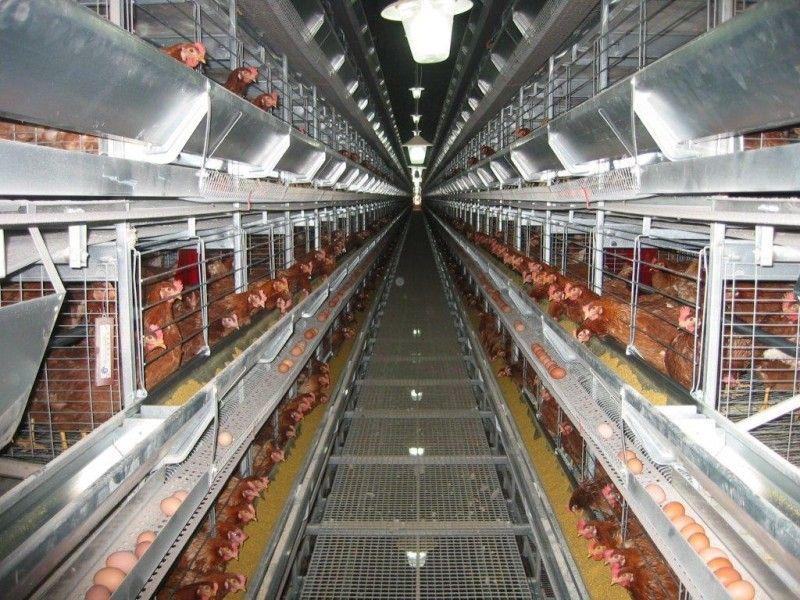The poultry industry has witnessed tremendous growth in the past few decades to meet the increasing demand for chicken and eggs. With rapidly growing population and rising incomes, consumption of poultry products has risen multifold in many parts of the world. However, the industry faces numerous challenges including high production costs, diseases, labour shortage and environmental concerns. Poultry keeping machinery has played a major role in addressing many of these challenges and helping farmers scale up production efficiently.
Feeding and Watering Systems
One of the major expenses in poultry farming is feeding the birds. Traditionally, feeding was done manually which was labour intensive and time consuming. Modern automated feeding systems have made the process more efficient. Several types of automated feeding systems are available such as chain feeding systems, pan feeding systems and tube feeding systems. These systems deliver the exact amount of feed required for the number of birds thereby reducing wastage.
Similarly, providing clean water to all birds is essential but was difficult manually. Automated watering systems like nipple waterers, bell waterers and cup waterers ensure each bird has access to water on demand. Some advanced systems even monitor water quality and consumption. Together, automated feeding and watering systems reduce labour needs substantially while optimising feed and water supply. This enhances growth, health and production of the birds.
Egg Collection and Transportation
Collecting eggs from layer cages several times a day and transporting them manually for packing was another labour intensive chore. Many farms now use egg collection belts and egg rollers placed under the cages that gently transport the eggs to the collection and packing area. Semi-automated systems use conveyor belts while fully automated systems use vacuum pumps or other techniques to collect the eggs efficiently and reduce breakages. This results in higher productivity and less chance of contamination.
Ventilation and Environmental Control
Providing optimal temperature, humidity and ventilation is critical for poultry health and growth. Modern poultry houses are equipped with computer-controlled ventilation, cooling and heating systems that precisely regulate these parameters. Sensors continuously monitor environmental conditions and automatically adjust fans, foggers, sprinklers or heating according to pre-set parameters. This avoids heat or cold stress on birds leading to improved performance. Besides, such climate control systems also improve energy efficiency of poultry houses.
Some houses also use evaporative cooling pads or closed loop systems along with large fans for effective ventilation especially in hot climates. Automatic controllers coupled with alarm systems ensure any malfunctioning is addressed quickly before it impacts birds. Precision environment control plays a key role in disease prevention and animal welfare apart from production gains.
Waste Management
Accumulation of large amounts of litter (bedding material mixed with manure) in Poultry Keeping Machinery houses poses another challenge if not addressed properly. Excess moisture in litter increases risks of infections, off-flavours in meat and foul odour emissions. Scrappers, conveyors and other types of loaders are used to clean out wet or used litter periodically and replace with fresh bedding material.
Many farms also install flushing systems under cages or flooring that wash away manure into collection pits using pipes. Advanced systems further process the manure using aerobic or anaerobic digesters to produce biogas, compost or other byproducts. This scientific manure management improves hygiene, recycles nutrients and reduces environmental pollution.
Brooding and Rearing Equipment
The delicate brooding phase requires specialized equipment to provide heat and protect chicks. Brooders or hover systems like gas brooding or electric radiant heat brooders maintain optimal warmth and humidity levels under chicks. Some use alternative energy sources like biomass for fuel. Equipment like chick guards, feeders and drinkers sized for young chicks ensure their comfort and nutrition during early growth stages.
Later, growing birds are transferred to grow out pens, cages or deep litter systems equipped with feeders, drinkers and ventilation appropriate for their size. Multi-tier battery cages for egg layers allow higher stocking densities while minimizing floor space. Integrated systems automatically control temperature, lighting, feeding and other factors based on bird age/size promoting uniform growth.
Processing and Packaging
After growing phase, many farms have in-house processing units to harvest broilers or collect and process eggs more efficiently. Equipment like stunning baths, automated neck cutting machines, automatic evisceration units and batch graders are commonly used. Advanced systems even individually weigh and sort chicken parts. Similarly, automated egg graders, washers, packagers working at high speeds pack dozens/trays of clean eggs consistently.
Packaging lines seal eggs or chicken in diverse retail packs like cardboard trays, bags or plastic containers with printing machines labeling them. Cold storage and chilling systems maintain products within safe temperature ranges. Together, such processing and packaging machinery improves yields, quality, food safety, labour productivity and prepares products suitably for market.
Explore more information on this topic, Please visit -
https://www.newswirestats.com/poultry-keeping-machinery-outlook-and-forecasts-analysis/
